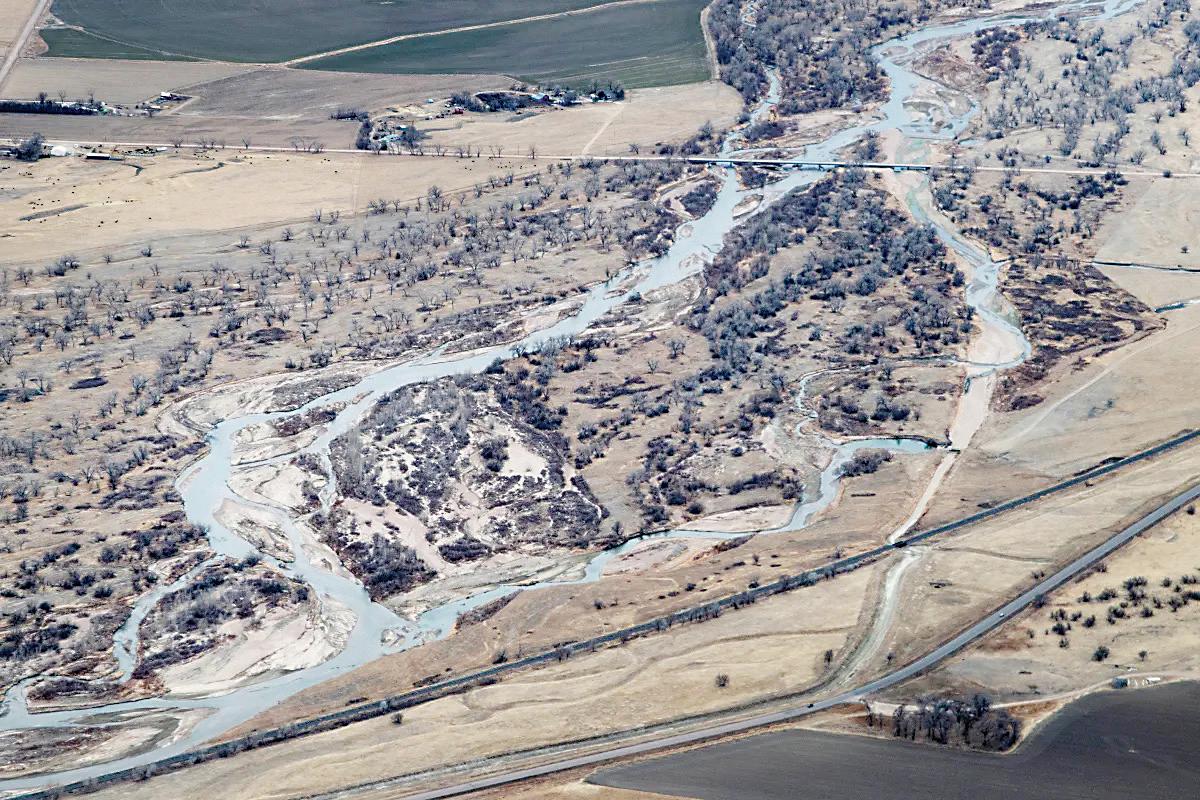
4 minute read
SOUTH PLATTE
development” by Colorado of water in the upper section of the South Platte, a stretch running back from Washington County all the way up through Greeley, Boulder County and Denver, Rein’s letter says. e compact doesn’t give Nebraska any say over how much upper section water Colorado can use from the South Platte or how much water must be available at a key river gauge at Balzac, a ghost town near Brush.
Other failings of the study, Rein adds, include relying on lower section ows of irrigation water returning to the river that Nebraska doesn’t have a right to; not accounting for diversion rights at Julesburg Reservoir; and ignoring that the canal would be iced over and unable to deliver water across the border during some of the time Nebraska has a right to take it, from October to April.
Nevertheless, Nebraska is itching to start.
Nebraska is in talks to option or buy up land around Julesburg and to the west for canal construction, Rein said. Grassed-over scars of Nebraska’s un nished attempt at a Perkins Canal in the late 1800s are visible across northeastern Colorado.
Colorado takes pains in its o cial response to say it has always honored a 1923 compact with Nebraska on how the South Platte operates, and always will. e letter, with extensive input from the Colorado At- torney General’s O ce, is not meant to be a hard “no,” Rein said. e engineering formulas and legalese are meant to say, “ ere may be things that you didn’t consider, that will reduce the amount of water you’ll be able to yield,” Rein said.
Nebraska surprised Colorado and Western water watchers in early 2022 with a revival of the ancient Perkins County Canal plan. (Perkins County is on the Nebraska side of the border, though the canal may or may not actually run through it.) e Nebraska consultants’ report was delivered to the state legislature in late December.
Nebraska’s governor warned Colorado had plans to use up all available South Platte River water before it left the state just northeast of Julesburg, and that the only way for Nebraska to secure its rights was a $500 million canal allowed in the compact.
Nebraska needs the water for its agriculture-based economy and for recreation, state o cials said. e state’s legislature quickly agreed, and voted to launch engineering studies and start setting aside money for eventual construction.
A year ago, Rein and the o ce of Gov. Jared Polis said they hadn’t heard many details of the canal plan directly from Nebraska engineers.

“Nebraska stands to lose the water supply that provides bene ts to its residents if it does not build the project,” the study concludes. If begun in earnest in 2023, the report estimates, the canal could be owing by 2033.
At the 500 cubic feet per second rate the canal has a compact-codied right to draw from the Colorado side of the South Platte, the project would deliver about 78,400 acrefeet to Nebraska in an average year for irrigation and storage, the study says. By comparison, Denver Water’s Dillon Reservoir in Summit County can hold 257,000 acre-feet of water. (An acre-foot provides a foot of irrigation water to one acre for a season or supplies two to four typical city households for a year.)
If expected Colorado river development projects take away 50% of the current remaining supply in the South Platte, the study adds, the canal could still deliver 69,900 acre-feet to Nebraska each year. e water could support 1.6 million irrigated acres in Nebraska and bolster municipal supply to faster-growing eastern cities such as Omaha and e Colorado response letter on future water supply does not include an extensive environmental analysis of the canal’s impacts. But previous studies have warned canal engineers may never overcome the South Platte ow requirements of the Endangered Species Act. e Nebraska report says the canal may actually improve conditions satisfying a 2006 interstate pact to support South Platte wetlands wildlife, but doesn’t explain how taking more water out before the Nebraska border would achieve that end.
Total economic bene ts from the project would range from $698 million to $754 million, an enticing payo for the $567 million project cost, the study adds.
Part of the study’s optimism about how much Colorado water it can get stem from a disagreement over the extent of climate change. Colorado forecasters and engineers predict continuing heavy impacts on the South Platte Basin from an ongoing drought and temperature and snowpack pressures. Nebraska studies “ nd more moderate temperature changes and even stabilized precipitation patterns” for the lower section of the river, the Nebraska report said. Nebraska’s Deputy Director of Natural Resources Jesse Bradley said the Colorado state engineer’s letter fails to account for the fact that the Nebraska supply study “used a conservative approach.” Bradley’s email attached a photo from near Julesburg showing strong river ow on March 14.
“Even assuming that ows entering the lower section are zero, there will still be signi cant ows available for the canal,” Bradley wrote. Bradley said his photo showed South Platte River ow at the state line near Julesburg was 260 cubic feet per second on a day Nebraska would have the right to divert, even though ows were near zero at the gauge dividing the river’s upper section from the lower section.
“In addition, this does not account for the many junior Colorado recharge projects in the lower section that are currently diverting, but would be curtailed to meet Nebraska’s demand,” he added.

“We have not had the opportunity to discuss the letter with Kevin (Rein) and hope to do so in the future,” Bradley said.
Nebraska o cials have said in some conversations they feel a canal could be completed within










